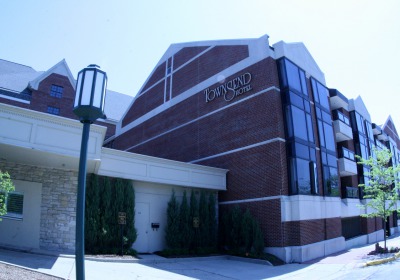Autodesk Automotive Days - Detroit 2009
Thu, 28 May 2009Autodesk held 'Automotive Days - Detroit 2009' on May 12th and 13th at the Townsend Hotel in Downtown Birmingham, Michigan, one of Detroit's more upscale communities. The two-day event focused on digital prototyping and included a variety of presentations - from advanced 3D visualization to engineering simulation.
The audience of designers, engineers, and visualization experts listened to advancements that will help smooth the data flow from initial 2D sketches to engineered and ready-to-tool 3D CAD data. In this way, instead of having multiple people using multiple tools and data formats, Autodesk can help collapse and integrate 3D design across traditional functional boundaries to improve design efficiency and reduce cost. This has been the vision in the industry for some time and, after viewing the work presented here, we are another step closer to realizing that vision.
Mike Jablo, Autodesk Director Global Accounts, opened the conference with a welcome speech and an introduction to the day's events. He summarized how Autodesk offers a wide range of solutions to the automotive industry that address both business and technical needs. He was followed by Brenda Discher, Autodesk Vice President Industry Marketing, who provided an overview of Autodesk's products and services. She stated that Autodesk has over 10,000 ‘seats' or licenses (legal) in use today including everything from 2D Drawing to 3D Modeling - making it the world leader in terms of seats and revenue. She also articulated Autodesk's vision of digital prototyping by combining design, visualization, and simulation workflows and data. Today, Autodesk's business is comprised of 75 percent design and 25 percent simulation with future growth expected and planned in the simulation area.
The first keynote speech of the day was given by Peter Diamandis of the X Prize Foundation. His address, ‘Winning by Design: Transforming the Automotive Industry with Technological Innovation' focused on how exponential change can and has overwhelmed linear thinking. With the automotive industry under tremendous pressure, Diamandis believes that technological innovation driven by incentives is the key to survival in the future while providing humanity with the transportation necessary to live.
Diamandis described how the linear model of growth and innovation evolved, pointing out that exponential change could be potentially disruptive and will require dramatic technological innovation. These major shifts in technology will cause people to rethink how things are done, just as Lindbergh's historic flight across the Atlantic did in the field of air travel.
In the coming years, new X Prizes will focus on energy, environment, exploration, and life sciences. The next three prizes include: Sequencing 100 human genomes in 10 days, landing a robot rover on the moon, and inventing a 100mpg car. He finished his presentation by encouraging the audience - "small groups of people with a passion and a vision can do almost anything" - while showing a video of the new Rocket Racing League, in which small planes equipped with rocket motors race in the sky against other rockets and against people on their computers...simultaneously!
The second keynote address was given by Larry Erickson, Chair of Transportation Design at the College for Creative Studies. Larry has an amazing background in automotive design through his career at both GM and Ford, but also through his own rod and custom work - the most famous of which, of course, being ‘Cadzilla'.
Erickson led by detailing the re-opening of the fully renovated and transformed Argonaut Building, which will open for classes on the CCS campus this fall. He then shared with the audience how design plays a critical role in defining the future of mobility. New technology is being developed faster and faster and designers need to understand how these changes affect people and travel, he said, before pointing out that designers will need to balance form and function with more depth. "A car is the biggest thing you can wear," says it best. And even with mass transit, transportation design must still have emotion since we, as passengers, are still human.
Continues →
By Patrick Wong

